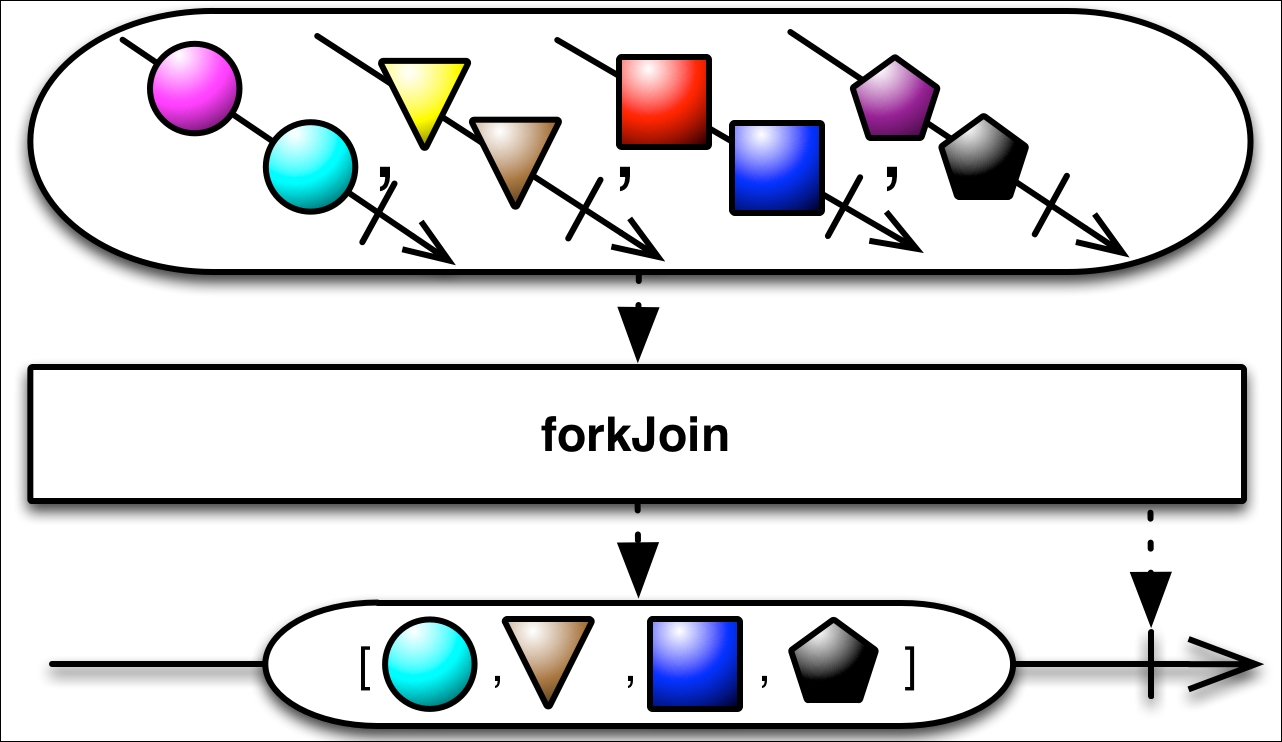Now we can have a look at a slightly more complicated example. In RxPHP, there's an interesting operator called forkJoin(). This operator takes as its parameter an array of Observables, collects the last value emitted for each of them, and when they all complete, emits a single array with the last values for each Observable.
This will make better sense when we look at the following marble diagram for forkJoin() operator in RxJS:

Marble diagram representing the forkJoin() operator in RxJS (http://reactivex.io/documentation/operators/zip.html)
We're going to implement a simplified version of the forkJoin() operator as an Observable. To make it extra clear what it does, we'll start with an example:
// fork_join_test_01.php
use Rx\Observable;
(new ForkJoinObservable([
Observable::fromArray([1, 2, 3, 4]),
Observable::fromArray([7, 6, 5]),
Observable::fromArray(['a', 'b', 'c']),
]))->subscribeCallback(function(...


